#Laser Wave
Photo

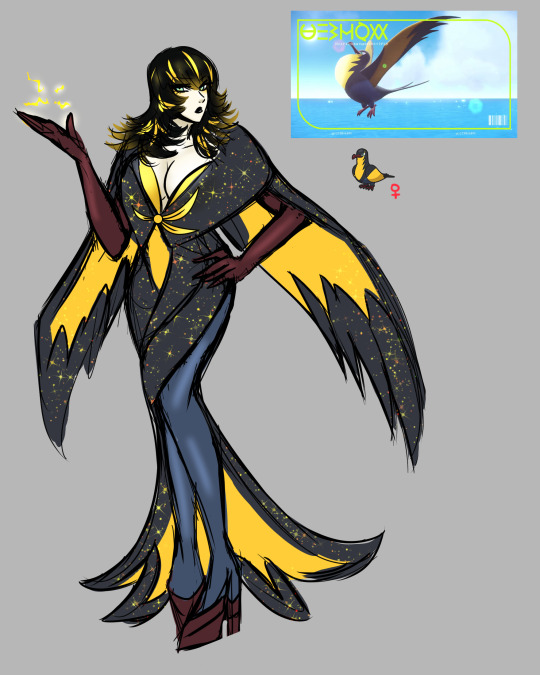




My Pokemon Scarlet team in gijinka forms!
#Despite the bugs I’ve been enjoying this game a lot!#I'm very attached to my team and imagine them as a jrpg party#designing pokemon gijinkas is a very fun creative exercise#rough sketches that I might clean up later#Tinkaton is an instant fav pokemon because I'm predictable#cute pink bean who down-smashes with giant bonk hammer#My cetitan is relaxed natured and mischievous so I just imagine her to be the fun team mom who can absolutely wreck havoc with her strength#Glimmora in my head is a floaty goth wizard who's chill and can shoot laser beams or can just throw rocks and call it magic lol#Armarouge is edgy but she owns it#Kilowattrel has taken many for the team just to capture pokemon thanks to her thunder wave#The meowscarada I have is apparently impish and often lost in thought so I see that as he causes problems and doesn't fix them#he's a twink bastard#pokemon scarlet#gijinka#pokemon gijinka#meowscarada#tinkaton#armarouge#kilowattrel#cetitan#glimmora#pokemon#meowscarada gijinka#tinkaton gijinka#armarouge gijinka#kilowattrel gijinka#cetitan gijinka#glimmora gijinka#artists on tumblr#art
915 notes
·
View notes
Note
Big scruffed cat energy!! My favorite kind of energy!! You are so right!!
It's the best energy! Sometimes Obi-Wan needs to grab Anakin by the back of his robes and scold him in the same tone we'd use to tell a cat to stop eating the houseplant. And really, what is the galaxy but a big fern that Anakin unwisely chews on and later coughs up on the rug?
#asks#anon#catboy anakin forever#it's why they should've stuck a bell on his robes#given him an ipad with one of those bird apps#distract him with a laser pointer#i guess that's what obi-wan was trying to do on mustafar#just waving his lightsaber so anakin would tire himself out
26 notes
·
View notes
Photo
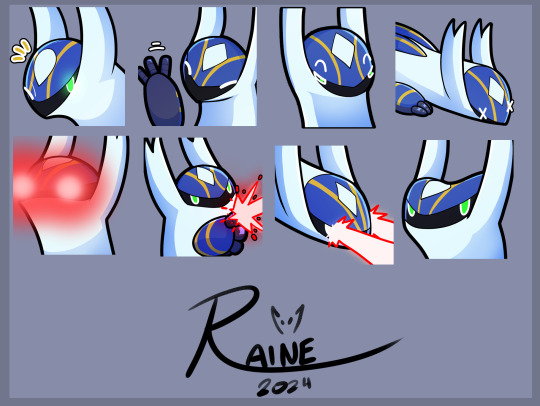
MWthorn emotes
Some emotes done for MWthorn
Posted using PostyBirb
5 notes
·
View notes
Text
i'm so easily fascinated i just spent a good minute playing with the mobile tumblr "make a post" button. what do you mean you can move it around that's fucking sick
#wait until this guy finds out about laser pointers#you could wave a yo-yo in front of my eyes and i'd probably be entertained by it for a good 4-5 minutes
19 notes
·
View notes
Text
#2023#video clip#NHK Academia#NHK#MIKIKO#dance choreography#laser beam#polygon wave#prfm#perfume#a-chan#kashiyuka#nocchi
14 notes
·
View notes
Text
*Dr. Smita Goel Homeopathy Clinic*
www.thehomeopathyclinic.co.in
Our immune system is our body’s defense against infections and other harmful invaders. Without it, we would constantly get sick from bacteria or viruses.
Our immune system is made up of special cells, tissues, and organs that work together to protect us.
Normally, the immune system can tell the difference between foreign cells and our own cells.
In an autoimmune disease, the immune system mistakes part of our body, like our joints or skin, as foreign. It releases proteins called autoantibodies that attack healthy cells.
Some autoimmune diseases target only one organ. Type 1 diabetes damages the pancreas. Other diseases, like Systemic Lupus Erythematosus (SLE), affect the whole body..
Women get autoimmune diseases rate is high compared to men. Often the disease starts during a woman’s childbearing years (15Years to 44Years).
Certain autoimmune diseases, like multiple sclerosis and lupus, run in families. Not every family member will necessarily have the same disease, but they inherit a susceptibility to an autoimmune condition.
Because the incidence of autoimmune diseases is rising, researchers suspect environmental factors like infections and exposure to chemicals or solvents might also be involved. Our modern life style, working style and foods are also huge causes.
We don’t know exactly what causes autoimmune diseases. Genetics, diet, infections, and exposure to chemicals might be involved.
The lymph or lymphatic, system is a major part of the immune system. It's a network of lymph nodes and vessels. Lymphatic vessels are thin tubes that branch, like blood vessels, throughout the body. They carry a clear fluid called lymph. Lymph contains tissue fluid, waste products, and immune system cells. Lymph nodes are small, bean-shaped clumps of immune system cells that are connected by lymphatic vessels. They contain white blood cells that trap viruses, bacteria, and other invaders, including cancer cells.
White blood cells are the cells of the immune system. They are made in one of your lymph organs, the bone marrow. Other lymph organs include the spleen and thymus.
When our immune system doesn't work the way it should, it is called an immune system disorder.
• Primary immune deficiency – Be born with a weak immune system.
• Acquired immune deficiency – Get a disease that weakens your immune system.
• Allergic reaction – Have an immune system that is too active.
• Autoimmune disease – Have an immune system that turns against you.
There are some common examples:
• Severe combined immunodeficiency (SCID) is an example of an immune deficiency that is present at birth. Children are in constant danger of infections from bacteria, viruses, and fungi. This disorder is sometimes called “bubble boy disease.”
• Temporary acquired immune deficiencies. Our immune system can be weakened by certain medicines, for example: This can happen to people on chemotherapy or other drugs used to treat cancer. It can also happen to people following organ transplants who take medicine to prevent organ rejection. Also, infections like the flu virus, mono (mononucleosis), and measles can weaken the immune system for a brief time. Our immune system can also be weakened by smoking, alcohol, and poor nutrition.
• AIDS. HIV, which causes AIDS, is an acquired viral infection that destroys important white blood cells and weakens the immune system. People with HIV/AIDS become seriously ill with infections that most people can fight off. These infections are called “opportunistic infections” because they take advantage of weak immune systems.
If we are born with certain genes, our immune system may react to substances in the environment that are normally harmless. These substances are called allergens. Having an allergic reaction is the most common example of an overactive immune system. Dust, mold, pollen, and foods are examples of allergens.
Some conditions caused by an overactive immune system are:
• Asthma: The response in our lungs can cause coughing, wheezing, and trouble breathing. Asthma can be triggered by common allergens like dust or pollen or by an irritant like tobacco smoke.
• Eczema: An allergen causes an itchy rash known as atopic dermatitis.
• Allergic rhinitis: Sneezing, a runny nose, sniffling, and swelling of your nasal passages from indoor allergens like dust and pets or outdoor allergens like pollens or molds.
In autoimmune diseases, the body attacks normal, healthy tissues. The causes are unknown. It is probably a combination of a person’s genes and something in the environment that triggers those genes.
There are some common autoimmune diseases are:
• Type 1 diabetes: The immune system attacks the cells in the pancreas that make insulin. Insulin removes sugar from the blood to use as energy.
• Rheumatoid arthritis: This type of arthritis causes swelling and deformities of the joints. An auto-antibody called rheumatoid factor is in the blood of some people with rheumatoid arthritis.
• Lupus: This disease that attacks body tissues, including the lungs, kidneys, and skin. Many types of auto-antibodies are found in the blood of people with lupus.
So, we should never ignore to our care for immunity system. Homeopathy medicines are a good choice for improving our immunity system.

#greater noida#best homeo clinic in indirapuram#ghaziabad#homeopathy clinics#homeopathy doctor#homeopathy for ibs#best skin doctor in ghaziabad#homeopathy#homeopathy cold treatment in indirapuram#homeopathy medicine#laser treatment in indirapuram#skin specialist in indirapuram#homeopathy skin allergies treatment in indirapuram#homeopathy specialist in indirapuram#indirapuram#best homeopathy clinic in indirapuram#best homeopathy doctor#homeopathy skin allergies treatment in noida#homeopathy treatment#homoeopathy#ghaziabad latest news#best schools in ghaziabad#ghaziabadnews#ayurvedic doctor in ghaziabad#wave city ghaziabad#child doctor in noida#child specialist in noida#noida news#nursery school in greater noida#noida
3 notes
·
View notes
Note
Hey QW! Hope you're doing fine and having a great time this year. Anyway can you make ranking the least flashiest to the most flashiest quirk to have? That's all and have a wonderful day/evening/night.
Well obviously, the most flashy Quirk is "Navel Laser". I will give honorable mentions to "Hellflame", "Wave Motion" and "Explosion", However, nothing can come close to to the sheer brilliance that is Aoyama blindingly bright laser, that living search light of a man. As for the least flashy, there's "Warp Gate", "Black", and "Dark Shadow". Can't get much darker then being living voids. All that considered, I have to give it to "Black Hole" though. That sucks up all light around it into nothingness. That's not just least flashy, that's negative flashy.
#My Hero Academia#Quirks#Naval Laser#Hellflame#Wave Motion#Explosion#Warp Gate#Black#Dark Shadow#Black Hole
5 notes
·
View notes
Text
I did the DOUBLE SLIT EXPERIMENT at home!
Light travels as a wave here (and not as a particle).
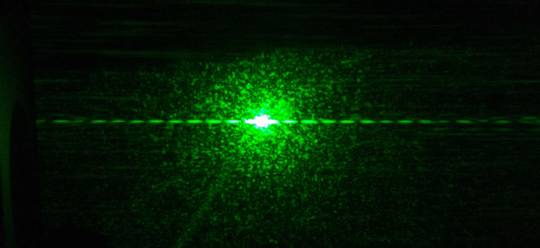
1 note
·
View note
Text
I really do love that Harribel was given a decent arsenal of attacks.
#no less than FIVE different techniques#four of which are unique to her#tier harribel#bleach#la gota: basic water blast#hirviendo: boiling wave of heat#ola azula: blue laser projectile#and of course Cascada#her ultimate attack#meanwhile Ichigo our protagonist has literally one attack for 80% of the series#at which point he gains a second technique which is just the SAME ATTACK but with an extra jolt#and then he FINALLY unlocks a third attack for the final battle and it's not even a unique attack it's just his own version#and it's awesome#but I love Ichigo for that because he's only had his powers for a few years and this isn't even His Job#he found one thing that worked and he stuck to it#meanwhile Harribel's over here naming every technique she's got
2 notes
·
View notes
Text
… oh godfucking dammit, I just realized that ONCE AGAIN, my hyperfixations (that have sound) have all been shows that do wonderful things with bass.
#just let me lay in front of a foghorn at this rate. an organ isn’t enough#I’m usually pretty protective of my hearing so I don’t often crank my headphones but tonight I Did while listening to the CLJ bgm#(DFQC’s theme still fuckin slaps y’all)#it’s a shame my sensory bs absolutely will NOT let me go to a rave. the ONE I went to on Wisconsin point was pretty chill bc I could park my#ass in the sand far enough away that the music wasn’t too loud + I got a camp fire + my back was to the stage lights but I could see some#lasers bouce off the waves crashing in so like … I might go to another one THERE
2 notes
·
View notes
Text
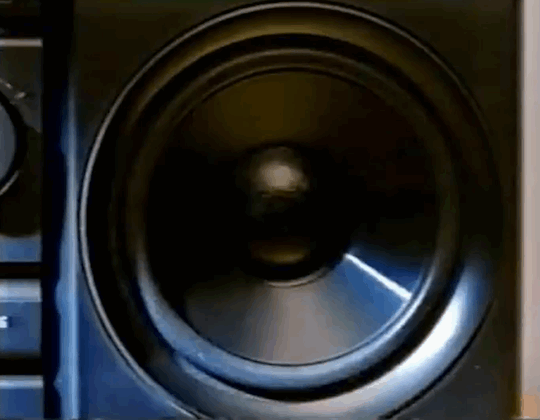
16 notes
·
View notes
Note
They have magical powers in ishin or is it some wacky improvised heat moves?
All Fax No Printer these dudes are shooting straight up fire balls out of their hands and infusing their weapons with electricity and dark magic this aint an ichiban situation this shit's Actually happening
#spoilers#ishin spoilers#snap chats#or. as real as far as we know- they dont use their qi in cutscenes obviously#at least i think majima uses dark magic idk he has like a dark seismic wave attack#im pretty sure the 'magical powers' is supposed to be qi though#so i mean yeah Magic but its at least based off of martial arts so. it flies#i just wanna know why tokugawa's got a fucking DBZ laser beam#i guess he is the shogun#man shows up on screen for one scene with his bright ass dome fires a kamehameha and then leaves
5 notes
·
View notes
Text
Scientists Discover Long Theorized 'Low Hum' Created by Supermassive Black Holes

Scientific theories surrounding gravitational wave background signals may provide clues about the earliest days of the universe.
An international team of astronomers has discovered a faint hum that permeates the universe and will provide them clues about supermassive black holes, colliding galaxies and possibly the Big Bang.
The North American Nanohertz Observatory for Gravitational Waves (NANOGrav) published a study on Wednesday showcasing evidence of the long theorized but never proven gravitational wave background (GWB) noise, a type of signal they believe emanates from supermassive black holes and colliding galaxies and may contain traces of the gravitational ripples caused by the Big Bang.
Four of the study’s six papers were published in the Astrophysical Journal Letters, the remaining two have been accepted for publication at a later date. The discovery was first made in 2021, but the culmination of their work is just now being published.
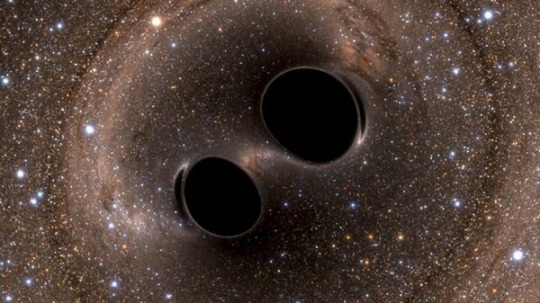
‘Humming Universe’: Hint of Gravitational Wave ‘Background’ Detected As Study Probes Cosmic Mystery! visual of gravitational waves from two converging black holes is depicted on a monitor behind Laser Interferometer Gravitational-Wave Observatory (LIGO) Co-Founder Kip Thorne as he speaks to members of the media following a news conference at the National Press Club in Washington, Thursday, Feb. 11, 2016. © AP Photo/Andrew Harnik
While GWB had been theorized before, no direct evidence had been found until now.
Gravitational waves themselves are also technically a recent discovery. While they were first described in Einstein’s 1915 Theory of General Relativity, they had not been detected until 2015.
While every piece of matter in the universe emits gravitational waves - most of them are undetectable - scientists can only hope to observe the effects of some of the largest bodies in the universe.
That finally happened when the Laser Interferometer Gravitational-wave Observatory (LIGO) detected them for the first time in 2015. The LIGO shoots lasers down three-mile-long perpendicular tubes, with the hope that a gravitational wave will pass over it, causing one laser to shrink slightly while the other grows.
Started in 1994 and first completed in 1997, the LIGO cost $395 million to build and didn’t detect any waves for the first 10 years of its existence. It shut down temporarily for a $200 million upgrade and renovation before finally detecting a gravitational wave that scientists believe came from two black holes, roughly 30 times the size of the sun each, colliding about 1.3 billion light-years from Earth.
But LIGO is not capable of detecting GWB created by super massive black holes, which range from 100,000 to six billion times the size of the sun.
So instead, the scientists at NANOGrav looked to the stars, or more specifically pulsars.
Pulsars are dead stars, also known as neutron stars, that are highly magnetic and rotate roughly 700 times a second. Their spin is incredibly consistent and looks like flickering when observed from Earth. They are sometimes compared to lighthouses or clocks because of their consistency.
The NANOGrav astronomers watched pulsars for 15 years across different observatories in West Virginia, Puerto Rico, New Mexico and Canada, waiting for tiny variations that would indicate a gravitational wave from a supermassive black hole.
They were able to distinguish the signal from other gravitational waves because of the pattern it passed through the pulsar. GWBs are unique from other gravitational waves because they come so close together they overlap. The researchers describe it by comparing it to hearing a crowd of people talking at once. At first, it sounds like a low consistent hum, until you concentrate and can pick out specific conversations.
The same became true of GWBs once astronomers were able to detect the tiniest variations. Officials say they could predict the pulses from the pulsars down to 1 microsecond, the equivalent of measuring the distance of the moon within a thousandth of a millimeter.
“We are extraordinarily excited to see this pattern pop out finally,” said Stephen Taylor, a gravitational wave astrophysicist at Vanderbilt University, who co-led the research.
While scientists aren’t positive about the source of the GWB, it mirrored theories about the types of gravitational waves thought to be created by supermassive black holes.
Scientists also say the rate of the waves is increasing, suggesting there may be hundreds or even thousands of supermassive black holes that have not yet been discovered. The signals may help us discover where some of these objects are and how they work, as well as provide scientists clues into the formation of galaxies and even the universe.
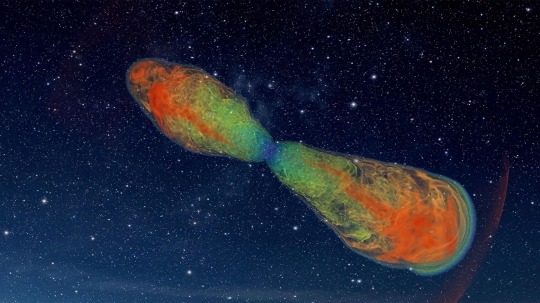
Gravitational Waves May Be Generated From Debris Fields Around Dying Stars — Study June 7, 2023!
Scientists previously feared supermassive black holes would never collide and just continually orbit each other; this was called the “final parsec problem” in the astrophysicist community.
“To get these types of high amplitudes that we are seeing, we need fairly massive black holes, and they need to form binaries [aka supermassive black holes] quite frequently and evolve quite efficiently,” Luke Zoltan Kelley, an assistant professor at the University of California, Berkeley who participated in the NANOGrav study, said in a statement.
He adds if it is confirmed that the waves came from a supermassive black hole, “then they absolutely had to have passed the final parsec one way or another.”
— Ian DeMartino, Sputnik International, Wednesday June 28, 2023
#Laser Interferometer Gravitational-Wave Observatory (LIGO)#Gravitational Waves#Science & Tech.#Puerto Rico 🇵🇷#West Virginia#Earth#Albert Einstein
2 notes
·
View notes
Text
11 Questions About Stretch Marks Answered
Stretch marks are a common condition with about 50% to 90% of people having them. Medically known as striae, stretch marks are a form of scars that look like lines or streaks and have a different texture from the surrounding skin. They look reddish or purplish at first and turn lighter or silvery over time. For more details visit us: https://www.cutislaserclinics.com/blog/11-questions-about-stretch-marks-answered/

#Cellulite treatment in singapore#acoustic shockwave therapy for cellulite#BTL X-WAVE in singapore#zimmer z-wave treatment singapore#laser clinic singapore#laser treatment clinics singapore#aesthetic clinics in Singapore
2 notes
·
View notes
Text
Sometimes i think that if i started to spit out every word that came to my mind it would turn into some fractal pattern of sounds and then rot, becoming a disgusting mess in my mouth
#dunno how to tag this#thoughts#at the evening after a couple of denial-acceptance cycles reading physics literature#diffraction of a laser beam on some sound waves like why do they need me to go through that
2 notes
·
View notes
Text
*Dr. Smita Goel Homeopathy Clinic*
www.thehomeopathyclinic.co.in
A person with short stature, or restricted growth, does not grow as tall as other people of the same gender, age, and ethnicity. The person's height is below the 3rd percentile.
Short stature can be a variant of normal growth, or it may indicate a disorder or condition.
Growth rate is an important indicator of overall health. Children who do not reach the 5th percentile by the age of 5 years are said to be small for gestational age (SGA). A pediatrician will look out for signs of "failure to thrive."
Early intervention can prevent future problems in many cases.
Normally, at 8 years of age, a child's arm span is around the same as their height. If these measurements are out of proportion, this may be a sign of disproportionate short stature (DSS), sometimes known as "dwarfism."
Fast facts on short stature
Here are some key points about short stature. More detail is in the main article.
• Short stature can happen for a wide range of reasons, including having small parents, malnutrition, and genetic conditions such as achondroplasia.
• Proportionate short stature (PSS) is when the person is small, but all the parts are in the usual proportions. In disproportionate short stature (DSS), the limbs may be small compared with the trunk.
• If short stature results from a growth hormone (GH) deficiency, GH treatment can often boost growth.
• Some people may experience long-term medical complications, but intelligence is not usually affected.
Causes
Growth depends on a complex range of factors, including genetic makeup, nutrition, and hormonal influences.
The most common cause of short stature is having parents whose height is below average, but around 5 percent of children with short stature have a medical condition.
Conditions that can underlie short stature include:
• Undernutrition, due to a disease or lack of nutrients
• Hypothyroidism, leading to a lack of growth hormone
• A tumor in the pituitary gland
• Diseases of the lungs, heart, kidneys, liver, or gastrointestinal tract
• Conditions that affect the production of collagen and other proteins
• Some chronic diseases, such as celiac disease and other inflammatory disorders
• Mitochondrial disease, which can affect the body in different ways, including growth
Sometimes, an injury to the head during childhood can lead to reduced growth.
A lack of growth hormone can also lead to delayed or absent sexual development.
Rheumatologic diseases, such as arthritis, are linked to short stature. This may happen because of the disease, or as a result of the glucocorticoid treatment, which can affect the release of growth hormone.
Disproportionate short stature (DSS) usually stems from a genetic mutation that affects the development of bone and cartilage and undermines physical growth.
The parents may not have short stature, but they may pass on a condition that is linked to DSS, such as achondroplasia, mucopolysaccharide disease, and spondyloepiphyseal dysplasia (SED).
Types
There are different types and causes of short stature, or restricted growth, and they will present differently. Because the range of conditions is so broad, restricted growth can be classified in various ways.
One categorization is:
• Variant restricted growth
• Proportionate short stature (PSS)
• Disproportionate short stature (DSS)
Each of these categories includes a number of types and causes of short stature.
Variant restricted growth
Sometimes a person is small but otherwise healthy. This can be referred to as variant restricted growth. It may happen for genetic or hormonal reasons.
If the parents are also small, this can be called familial short stature (FSS). If it stems from a hormonal issue, it is a constitutional delay in growth and adolescence (CDGA).
The limbs and the head develop in proportion with the spine, and the individual is otherwise healthy.
Growth happens throughout the body, so the legs, for example, are in proportion with the spine.
In most cases, the individual's parents are also small, but sometimes small stature happens because the body does not produce enough growth hormone (GH), or the body does not process growth hormone properly. This is known as GH insensitivity. Hypothyrodism can lead to low hormone production.
Growth hormone treatment during childhood may help.
Proportionate short stature (PSS)
Sometimes, overall growth is restricted, but the person's body is in proportion, and the individual has a related health problem. This is known as proportionate short stature (PSS).
If the individual is heavy for their height, this can suggest a hormone problem. The problem could be hypothyroidism, excess glucorticoid production, or too little GH.
A person who is small and their weight is low for their height may be experiencing malnutrition, or they may have a disorder that leads to malabsorption.
Whatever the underlying reason, if it affects overall growth, it may impact development in at least one body system, so treatment is needed.
During adulthood, a person with this type of restricted growth is more likely to experience:
• osteoporosis
• cardiovascular problems
• reduced muscle strength
Rarely, there may be cognitive problems, or problems with thinking. This depends on the cause of the short stature.
Disproportionate short stature (DSS)
Disproportionate short stature (DSS) is linked to a genetic mutation. The parents are usually of average height. As with other types of short stature, a range underlying causes is possible.
An individual with DSS will be small in height, and they will have other unusual physical features. These may be visible at birth, or they may develop in time as the infant develops.
Most individuals will have an average-sized trunk and short limbs, but some people may have a very short trunk and shortened, but disproportionately large limbs. Head size may be disproportionately large.
Intelligence or cognitive abilities are unlikely to be affected unless the person has hydrocephalus, or too much fluid around the brain.
Achondroplasia underlies around 70 percent of cases of DSS. It affects around 1 in 15,000 to 1 in 40,000 people.
Features include:
• an average-sized trunk
• short limbs, especially the upper arms and legs
• short fingers, possibly with a wide space between the middle and ring fingers
• limited mobility in the elbows
• a large head with a prominent forehead and flattened bridge of the nose
• bowed legs
• lordosis, a progressive development of a swayed lower back
• average adult height of 4 feet, or 122 cm
Hypochondroplasia is a mild form of achondroplasia. It may be difficult to differentiate between familial short stature and achondroplasia.
Achondroplasia and hypochondroplasia result from a genetic mutation.
Genetic conditions, such as Turner syndrome, Down syndrome, or Prader Willi syndrome, are also linked to DSS.
Diagnosis
Some types of short stature can be diagnosed at birth. In other cases, routine visits to a pediatrician should reveal any abnormal growth pattern.
The doctor will record the child's head circumference, height, and weight.
If the doctor suspects restricted growth, they will carry out a physical examination, look at the child's medical and family history, and possibly carry out some tests.
These may include:
An x-ray, to assess for problems with bone development
An insulin tolerance test, to check for a deficiency in the growth hormone insulin-like growth factor-1 (IGF-1).
In this test, insulin is injected into a vein, causing blood glucose levels to drop. Normally, this would trigger the pituitary gland to release growth hormone (GH). If GH levels are lower than normal, there may be a GH deficiency.
Other tests include:
• a thyroid-stimulating hormone test, to check for hypothyroidism
• a complete blood count, to test for anemia
• metabolic tests, to assess liver and kidney function
• erythrocyte sedimentation and C-reactive protein tests, to assess for inflammatory bowel disease
• urine tests can check for enzyme deficiency disorders
• tissue transglutinase and immunoglobulin A tests, for celiac disease
• imaging scans, such as an x-ray of the skeleton and the skull or an MRI, can detect problems with the pituitary gland or hypothalamus
• bone marrow or skin biopsies may help confirm conditions associated with short stature
Treatment
Treatment will depend on the cause of the short stature.
If there are signs of malnutrition, the child may need nutritional supplements or treatment for a bowel disorder or other condition that is preventing them from absorbing nutrients.
If growth is restricted or delayed because of a hormonal problem, GH treatment may be necessary.
Pediatric hormone treatment: In children who produce too little GH, a daily injection of hormone treatment may stimulate physical growth later in life. Medications, such as somatropin, may eventually add 4 inches, or 10 centimeters, to adult height.
Adult hormone treatment
: Treatment for adults can help protect against complications, for example, cardiovascular disease and low bone mineral density.
Somatropin, also known as recombinant GH, might be recommended for people who:
• have a severe growth hormone deficiency
• experience impaired quality of life
• are already receiving treatment for another pituitary hormone deficiency
Adult patients generally self-administer daily with an injection.
Adverse effects of somatropin include headache, muscle pain, edema, or fluid retention, problems with eyesight, joint pain, vomiting, and nausea.
The patient may receive treatment to control chronic conditions, such as heart disease, lung disease, and arthritis.
Treatment for DSS
As DSS often stems from a genetic disorder, treatment focuses mainly on the complications.
Some patients with very short legs may undergo leg lengthening. The leg bone is broken and then fixed into a special frame. The frame is adjusted daily to lengthen the bone.
This does not always work, it takes a long time, and there is a risk of complications, including:
• pain
• the bone forming badly or at an inappropriate rate
• infection
• deep vein thrombosis (DVT), a blood clot in a vein
Other possible surgical treatments include:
• use of growth plates, where metal staples are inserted into the ends of long bones where growth takes place, to help bones grow in the right direction
• inserting staples or rods to help the spine form the right shape
• increasing the size of the opening in the bones of the spine to reduce pressure on the spinal cord
Regular monitoring can reduce the risk of complications.
Complications
A person with DSS may experience a number of complications.
These include:
• arthritis later in life
• delayed mobility development
• dental problems
• bowed legs
• hearing problems and otitis media
• hydrocephalus, or too much fluid in the brain cavities
• hunching of the back
• limb problems
• swaying of the back
• narrowing of the channel in the lower spine during adulthood and other spine problem
• sleep apnea
• weight gain
• speech and language problems
Individuals with proportionate short stature (PSS) may have poorly developed organs and pregnancy complications, such as respiratory problems. Delivery will normally be by cesarean section.
Outlook
Most people with short stature will have a normal life expectancy, and 90 percent of children who are small for their age at 2 years will "catch up" by adulthood.
The 10 percent who do not catch up are likely to have a condition such as fetal alcohol, Prader-Willi, or Down syndrome.
A person with achondroplasia can also expect a normal lifespan.
However, some serious conditions that are linked to some cases of short stature can be fatal.

#greater noida#best homeo clinic in indirapuram#ghaziabad#homeopathy clinics#homeopathy doctor#homeopathy for ibs#best skin doctor in ghaziabad#homeopathy#homeopathy cold treatment in indirapuram#homeopathy medicine#best homeopathy clinic in indirapuram#best homeopathy doctor#homeopathy skin allergies treatment in indirapuram#homeopathy skin allergies treatment in noida#homeopathy specialist in indirapuram#homeopathy treatment#laser treatment in indirapuram#skin specialist in indirapuram#indirapuram#ghaziabad latest news#ghaziabadnews#ayurvedic doctor in ghaziabad#wave city ghaziabad#best schools in ghaziabad#child doctor in noida#child specialist in noida#noida news#nursery school in greater noida#noida#delhifood
2 notes
·
View notes